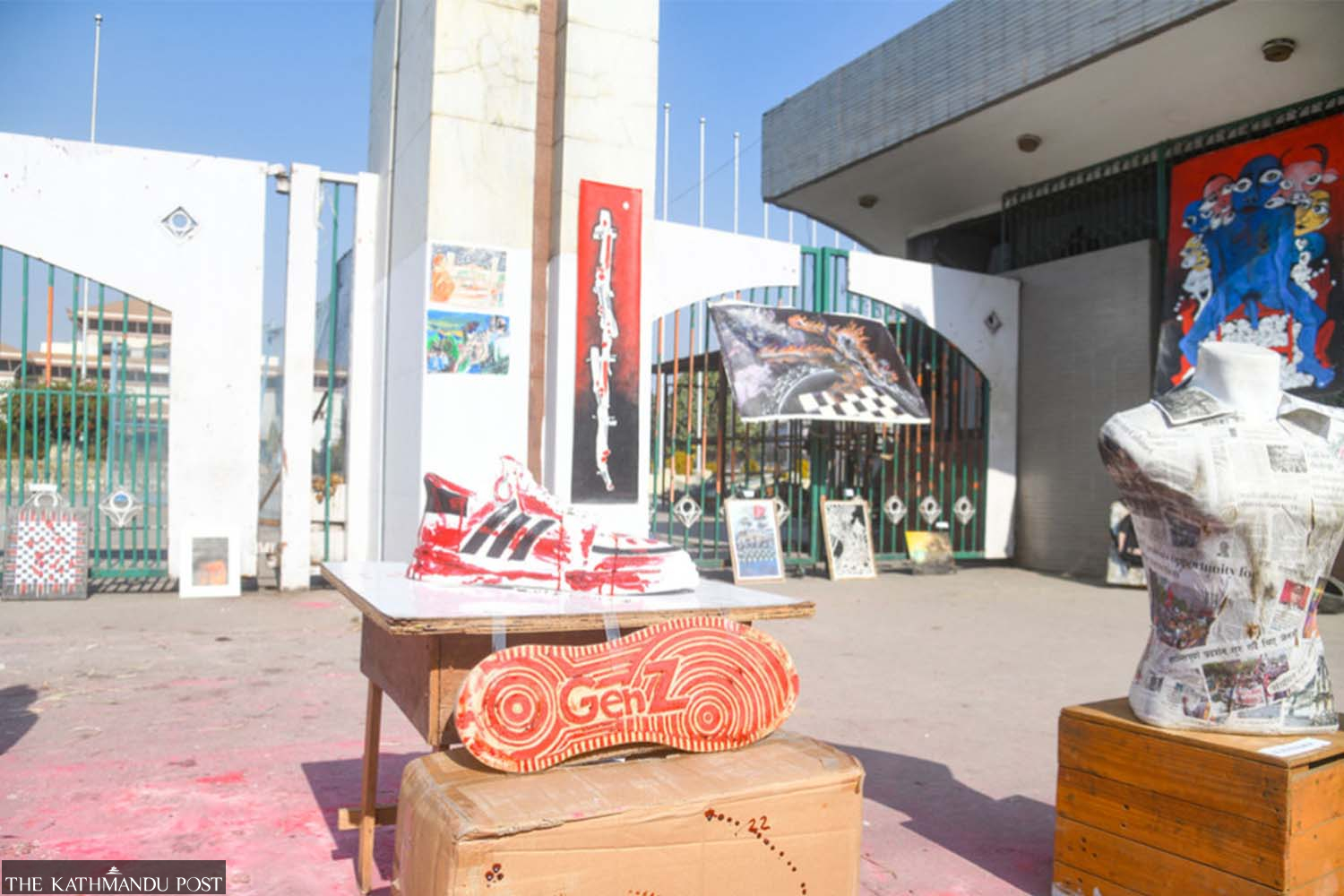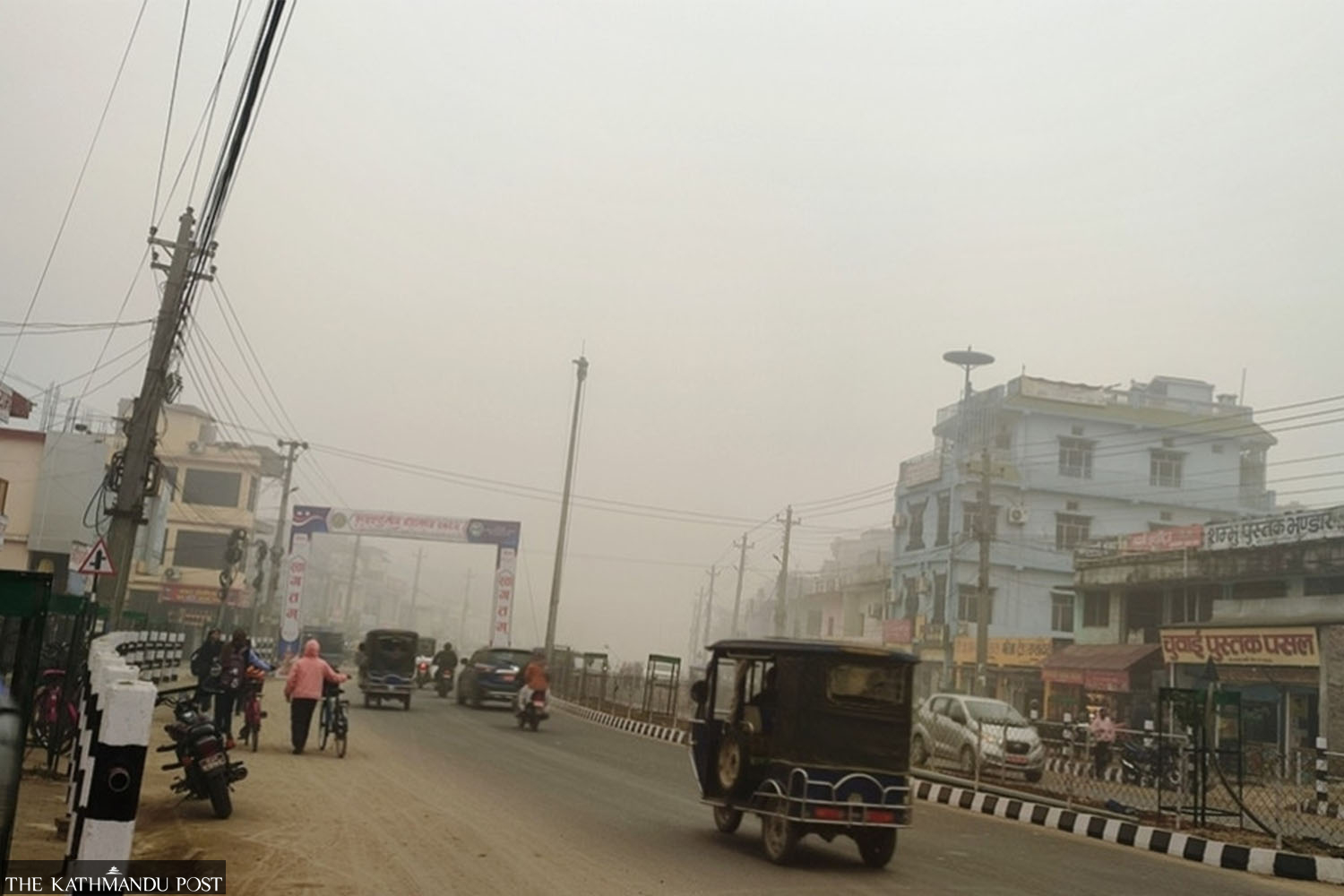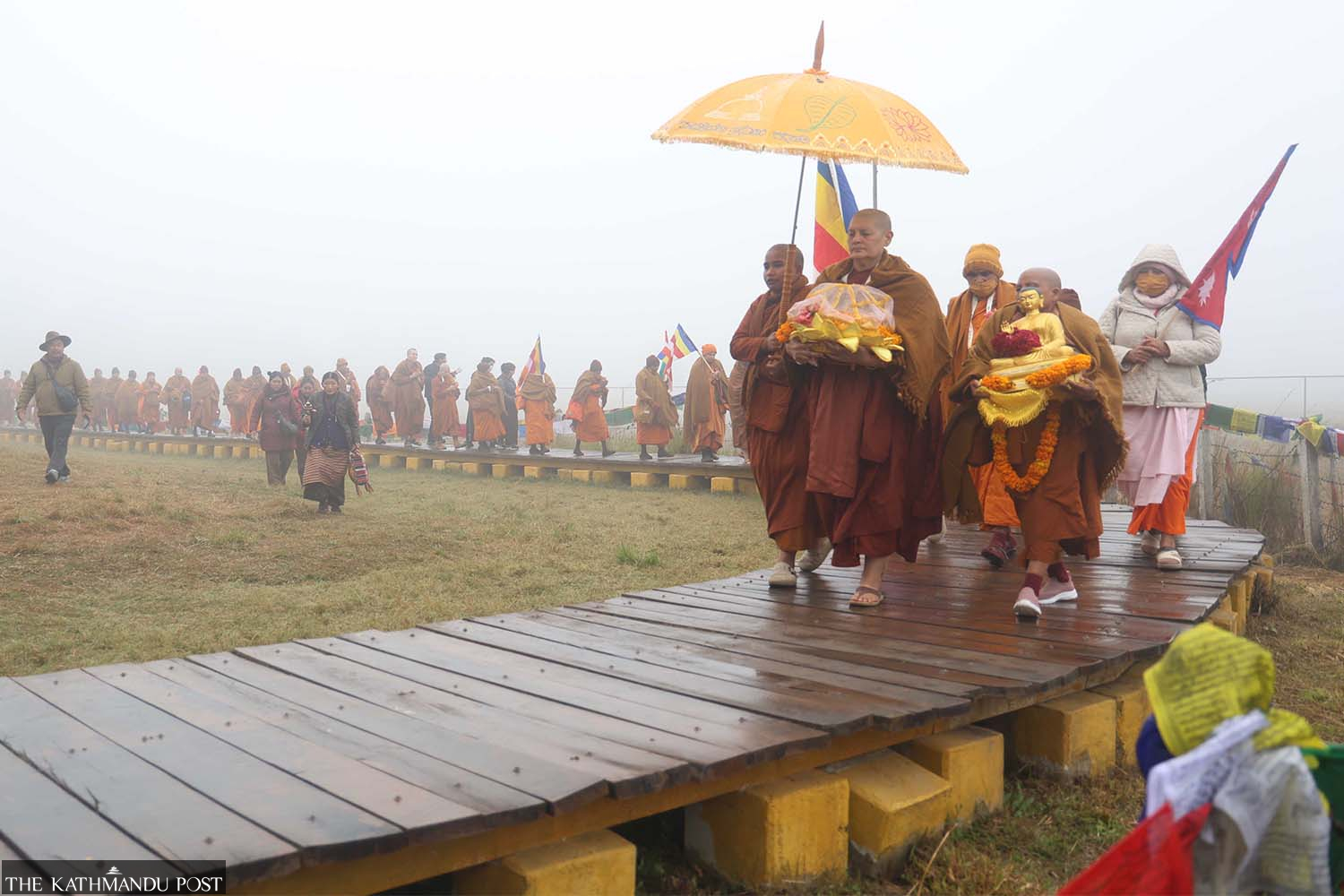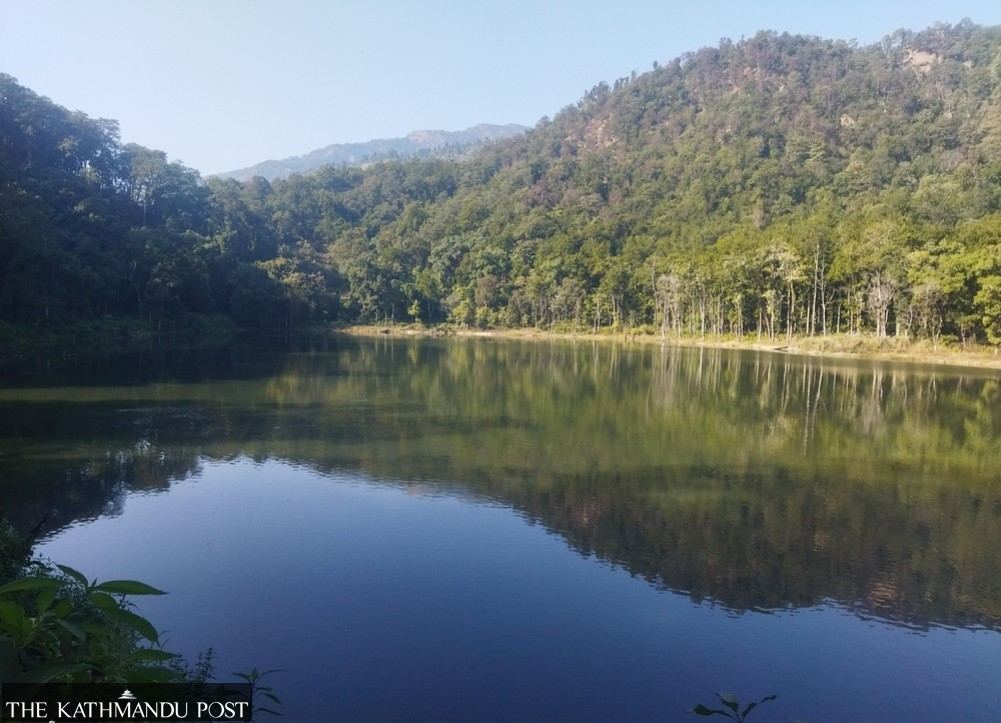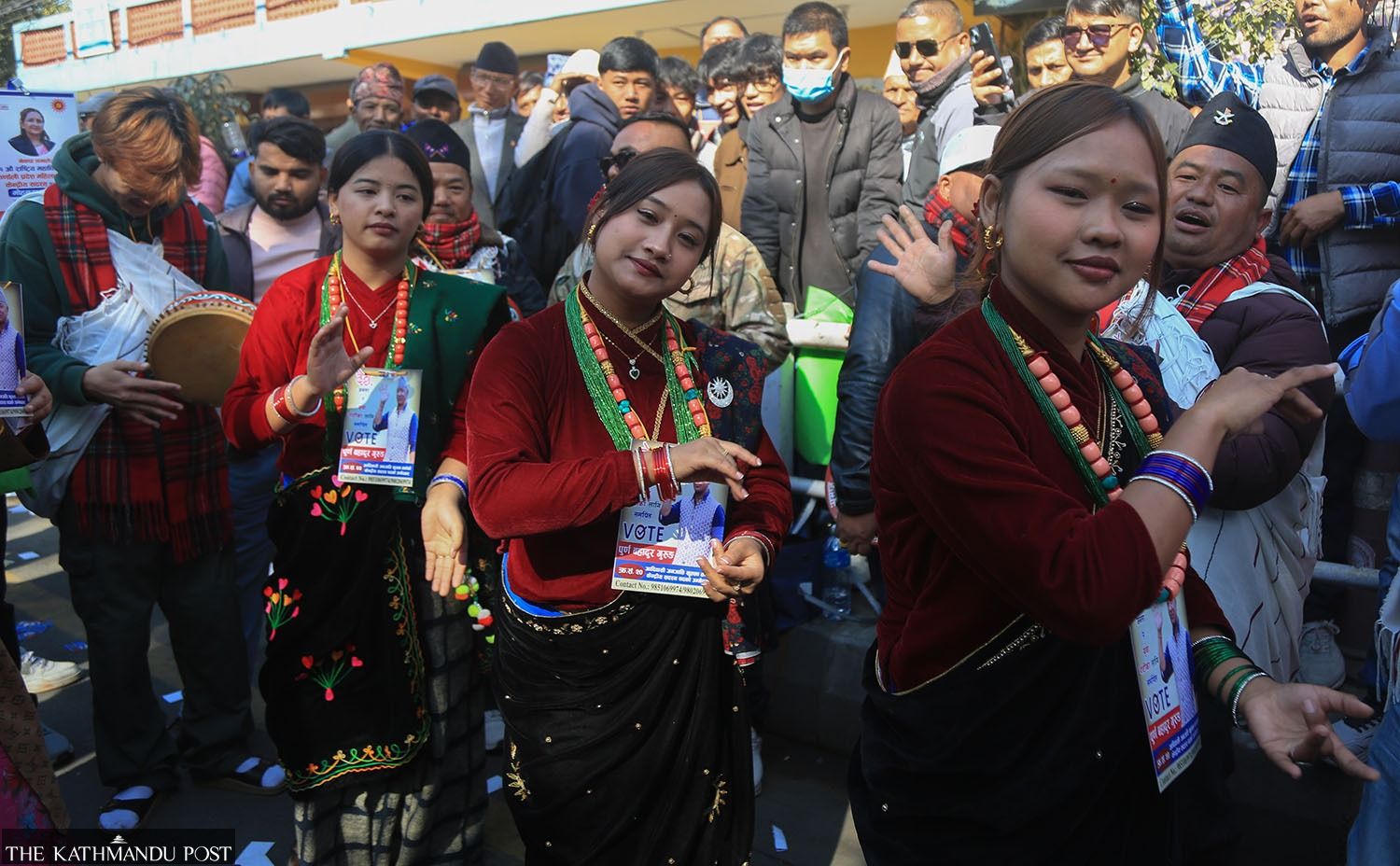bookmarkPublished at : April 24, 2022
Updated at : April 24, 2022 19:01
Nepal is holding the local level elections for a second time since the promulgation of the constitution in 2015 in a single phase on May 13.
A total of 35,221 representatives will be elected for 753 local units -- six metropolitan cities, 11 sub-metropolitan cities, 276 urban municipalities and 460 rural municipalities.
As many as 79 parties have registered themselves to contest the elections which will elect 586 mayors and deputy mayors in urban municipalities, 920 chairs and vice chairs in rural municipalities and 333,715 office bearers at the ward level including 6,743 ward chairs.
According to the Election Commission, a total of 17,733,723 voters have registered themselves to vote with the highest number of registered voters --715,223 -- in Morang district.
Manang is the smallest district with 6,496 registered voters.
There will be 10,756 polling stations and 21,955 polling booths across the country, according to the Election Commission.
The following photos of voters and election candidates by US Peace Corps volunteers, in the 1960s capture the mood of elections during the Panchayat.
![]() Election takes place at Tundikhel in Silgadhi, Doti (Circa 1967). Nepal Photo History Project/Peace Corp
Election takes place at Tundikhel in Silgadhi, Doti (Circa 1967). Nepal Photo History Project/Peace Corp![]() Panchayat candidates at a “candidates meeting” in Batulechaur, Pokhara, Kaski (Circa 1966). Nepal Photo History Project/Peace Corp
Panchayat candidates at a “candidates meeting” in Batulechaur, Pokhara, Kaski (Circa 1966). Nepal Photo History Project/Peace Corp![]() An election campaign poster in Baglung calling people to vote for the white coloured ballot box (Circa 1966). Nepal Photo History Project/Peace Corp
An election campaign poster in Baglung calling people to vote for the white coloured ballot box (Circa 1966). Nepal Photo History Project/Peace Corp![]() Voting and declaration of a winner in one of the seven Panchayat organisations in Salyan (Circa 1965). Nepal Photo History Project/Peace Corp
Voting and declaration of a winner in one of the seven Panchayat organisations in Salyan (Circa 1965). Nepal Photo History Project/Peace Corp![]() Women wait to vote in Baglung (Circa 1966). Nepal Photo History Project/Peace Corp
Women wait to vote in Baglung (Circa 1966). Nepal Photo History Project/Peace Corp![]() A man casts his vote as the Panchayat Development Officer (seated) supervises local elections in Bhojpur (Circa 1964). Nepal Photo History Project/Peace Corp
A man casts his vote as the Panchayat Development Officer (seated) supervises local elections in Bhojpur (Circa 1964). Nepal Photo History Project/Peace Corp![]() Election victors covered in crimson powder during a parade in Beni Bazar, Myagdi (Circa 1967). Nepal Photo History Project/Peace Corp
Election victors covered in crimson powder during a parade in Beni Bazar, Myagdi (Circa 1967). Nepal Photo History Project/Peace Corp![]() Two men check the voter registration lists in Baglung (Circa 1966). Nepal Photo History Project/Peace Corp
Two men check the voter registration lists in Baglung (Circa 1966). Nepal Photo History Project/Peace Corp![]() A victory procession through the Beni Bazaar after the election of Myagdi’s district chairman (Circa 1967). Nepal Photo History Project/Peace Corp
A victory procession through the Beni Bazaar after the election of Myagdi’s district chairman (Circa 1967). Nepal Photo History Project/Peace Corp![]() An election campaign poster in Ridi, Gulmi (Circa 1967). Nepal Photo History Project/Peace Corp
An election campaign poster in Ridi, Gulmi (Circa 1967). Nepal Photo History Project/Peace Corp![]() A man smokes a cigarette as he waits to mark the wrists of people who have voted in Baglung (Circa 1966). Nepal Photo History Project/Peace Corp
A man smokes a cigarette as he waits to mark the wrists of people who have voted in Baglung (Circa 1966). Nepal Photo History Project/Peace Corp![]() A dark grey vehicle with a canvas top is parked in downtown Jaleswar, Mahottari, on Election Day. The vehicle belongs to one of the district’s government offices, a product of the Soviet Union’s aid program to Nepal’s tarai region. In the 1960s, Russian aid in the region was quite visible (Circa 1968). Nepal Photo History Project/Peace Corp
A dark grey vehicle with a canvas top is parked in downtown Jaleswar, Mahottari, on Election Day. The vehicle belongs to one of the district’s government offices, a product of the Soviet Union’s aid program to Nepal’s tarai region. In the 1960s, Russian aid in the region was quite visible (Circa 1968). Nepal Photo History Project/Peace Corp![]() A parade for a winner in the Salyan District Panchayat election (Circa 1965). Nepal Photo History Project/Peace Corp
A parade for a winner in the Salyan District Panchayat election (Circa 1965). Nepal Photo History Project/Peace Corp![]() A stage set up for candidate’s election speeches representing one of seven organisations within the Panchayat system: farmers, youth, women, retired soldiers, labor, graduates, and children (Circa 1965). Nepal Photo History Project/Peace Corp
A stage set up for candidate’s election speeches representing one of seven organisations within the Panchayat system: farmers, youth, women, retired soldiers, labor, graduates, and children (Circa 1965). Nepal Photo History Project/Peace Corp![]() Election candidates and their parties are represented on the ballot in different colours. In the photo are supporters of the “yellow” candidate showing their support on Election Day in Jaleswar, Mahottari (Circa 1968). Nepal Photo History Project/Peace Corp
Election candidates and their parties are represented on the ballot in different colours. In the photo are supporters of the “yellow” candidate showing their support on Election Day in Jaleswar, Mahottari (Circa 1968). Nepal Photo History Project/Peace Corp![]() A voting booth in Salyan (Circa 1965). Nepal Photo History Project/Peace Corp
A voting booth in Salyan (Circa 1965). Nepal Photo History Project/Peace Corp![]() A man casts a vote in the Panchayat election in Bhojpur. Voting was formalized, and each voter walked to the table alone to cast his vote under the eye of local police (Circa 1964). Nepal Photo History Project/Peace Corp
A man casts a vote in the Panchayat election in Bhojpur. Voting was formalized, and each voter walked to the table alone to cast his vote under the eye of local police (Circa 1964). Nepal Photo History Project/Peace Corp![]() Supporters of the incumbent, Babu Sahib of Biruwa Guthi, used red flags, and this may be his tractor, which carries his supporters in this fashion around the panchayat in Parsa. His challenger was a Tharu; his supporters had green flags (Circa 1967). Nepal Photo History Project/Peace Corp
Supporters of the incumbent, Babu Sahib of Biruwa Guthi, used red flags, and this may be his tractor, which carries his supporters in this fashion around the panchayat in Parsa. His challenger was a Tharu; his supporters had green flags (Circa 1967). Nepal Photo History Project/Peace Corp![]() Men and boys ride bicycles with green flags in front of the Panchayat House in Parsa. They supported the challenger Bishawnath Chaudhary from Biruwa over Babu Sahib (last name was Singh), who was running for reelection as Pradhan Pancha. Chaudhary won this election. A threshing area can be seen behind the Panchayat House (Circa 1967). Nepal Photo History Project/Peace Corp
Men and boys ride bicycles with green flags in front of the Panchayat House in Parsa. They supported the challenger Bishawnath Chaudhary from Biruwa over Babu Sahib (last name was Singh), who was running for reelection as Pradhan Pancha. Chaudhary won this election. A threshing area can be seen behind the Panchayat House (Circa 1967). Nepal Photo History Project/Peace Corp![]() Young Newar women at an outdoor district-level election in Dhankuta (Circa 1966). Nepal Photo History Project/Peace Corp
Young Newar women at an outdoor district-level election in Dhankuta (Circa 1966). Nepal Photo History Project/Peace Corp![]() Eligible voters line up to cast their ballots for Dailekh District Panchayat members at the Judicial Office in the new bazaar of Dailekh town (Circa 1968). Nepal Photo History Project/Peace Corp
Eligible voters line up to cast their ballots for Dailekh District Panchayat members at the Judicial Office in the new bazaar of Dailekh town (Circa 1968). Nepal Photo History Project/Peace Corp![]() Dailekh residents celebrate the election of Karna Bahadur Singh (centre, with crimson powder) as Dailekh’s delegate to the National Panchayat (Circa 1968). Nepal Photo History Project/Peace Corp
Dailekh residents celebrate the election of Karna Bahadur Singh (centre, with crimson powder) as Dailekh’s delegate to the National Panchayat (Circa 1968). Nepal Photo History Project/Peace Corp![]() Panchayat District Officer (centre left) and District Panchayat members during the 1968 election of new panchayat members at a Tundikhel in Dailekh. Nepal Photo History Project/Peace CorpOnce Upon a Time
Panchayat District Officer (centre left) and District Panchayat members during the 1968 election of new panchayat members at a Tundikhel in Dailekh. Nepal Photo History Project/Peace CorpOnce Upon a Time

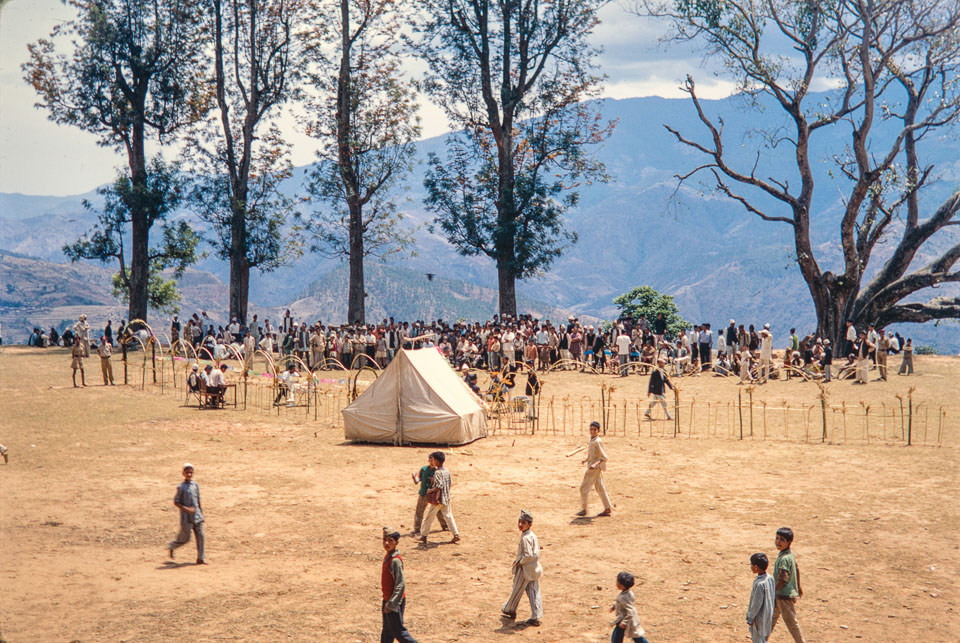
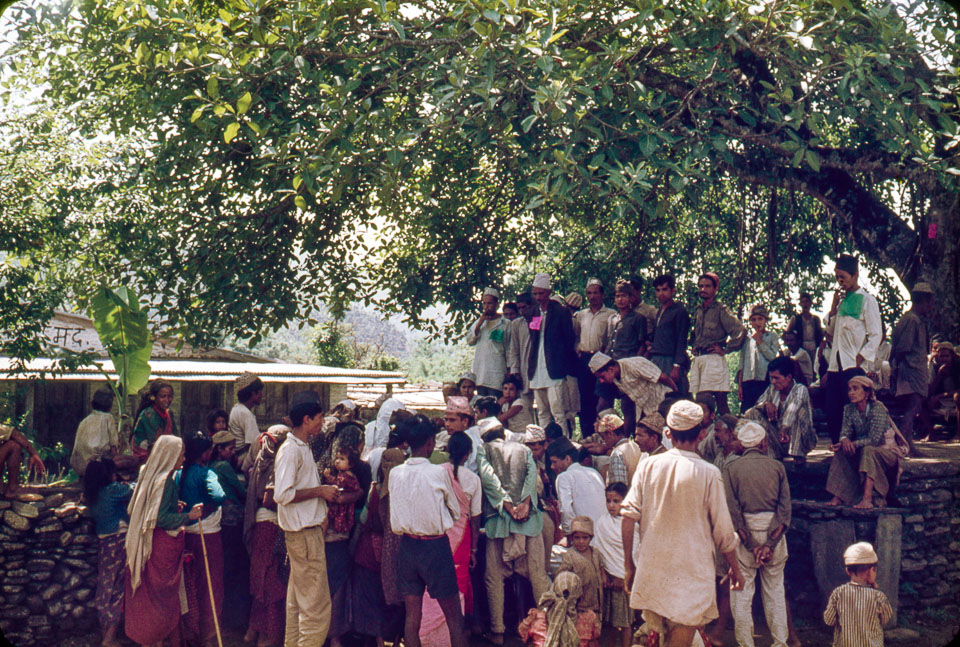

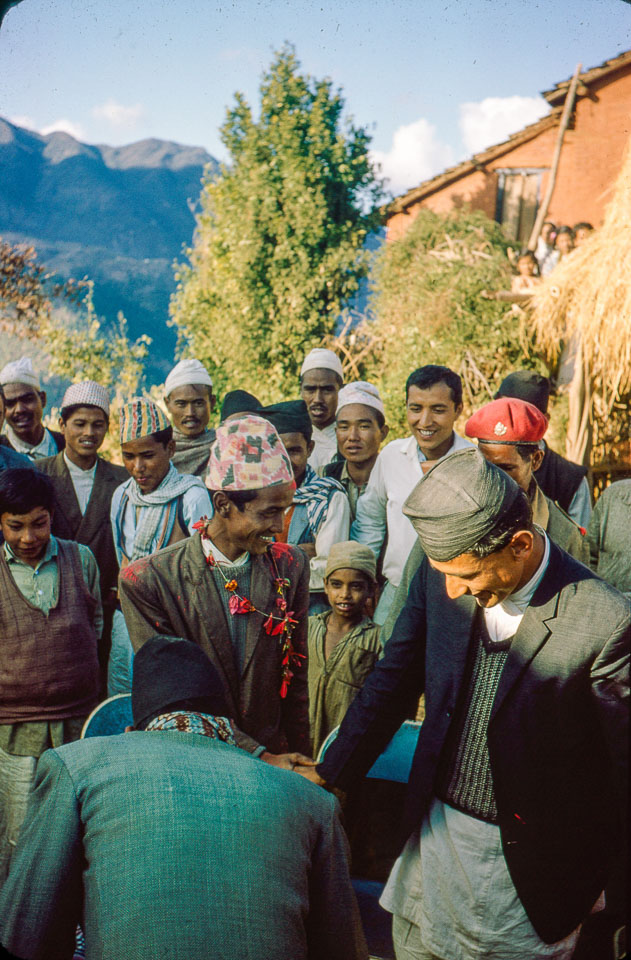
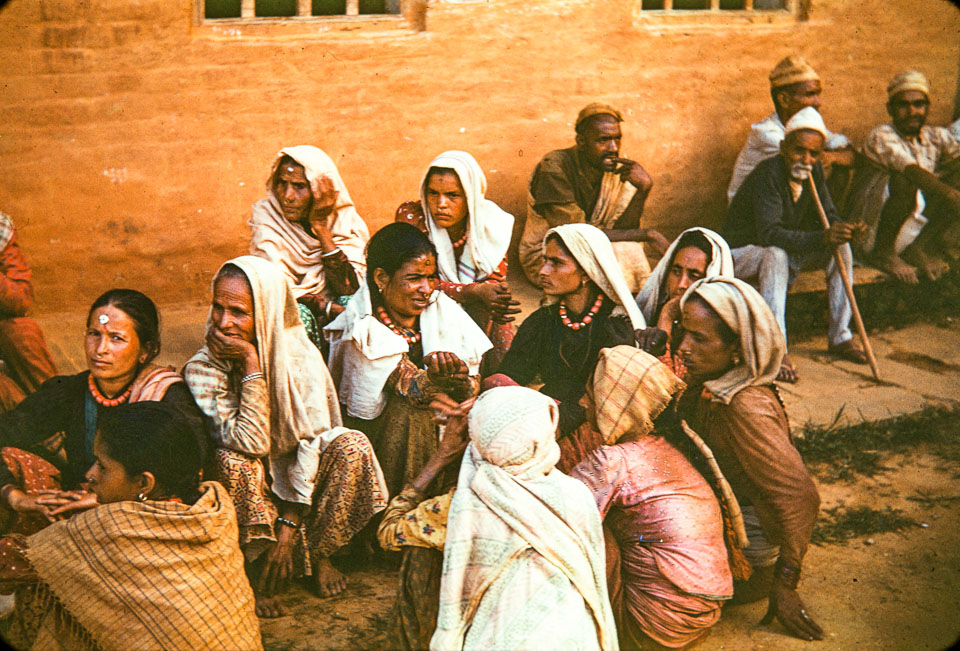
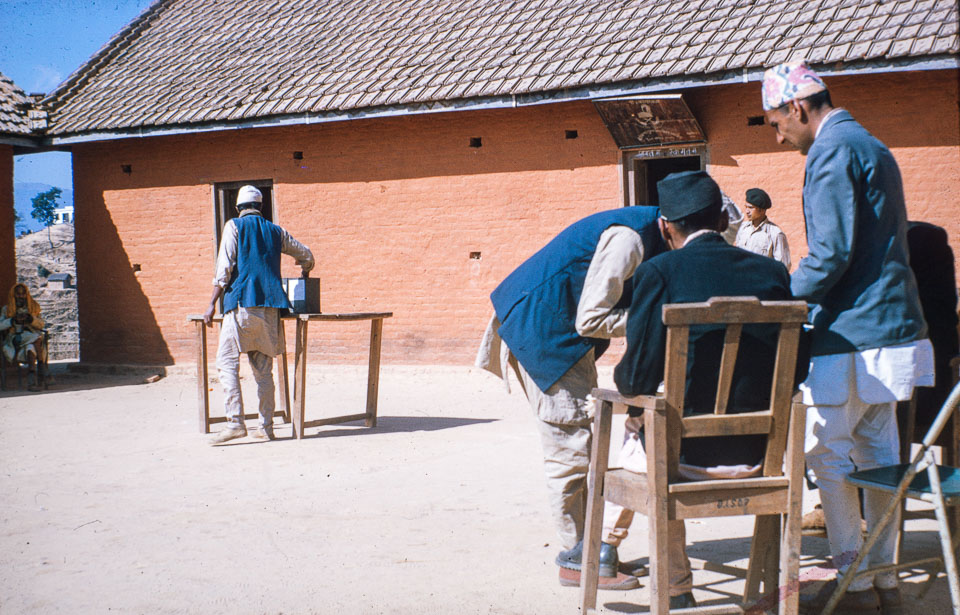
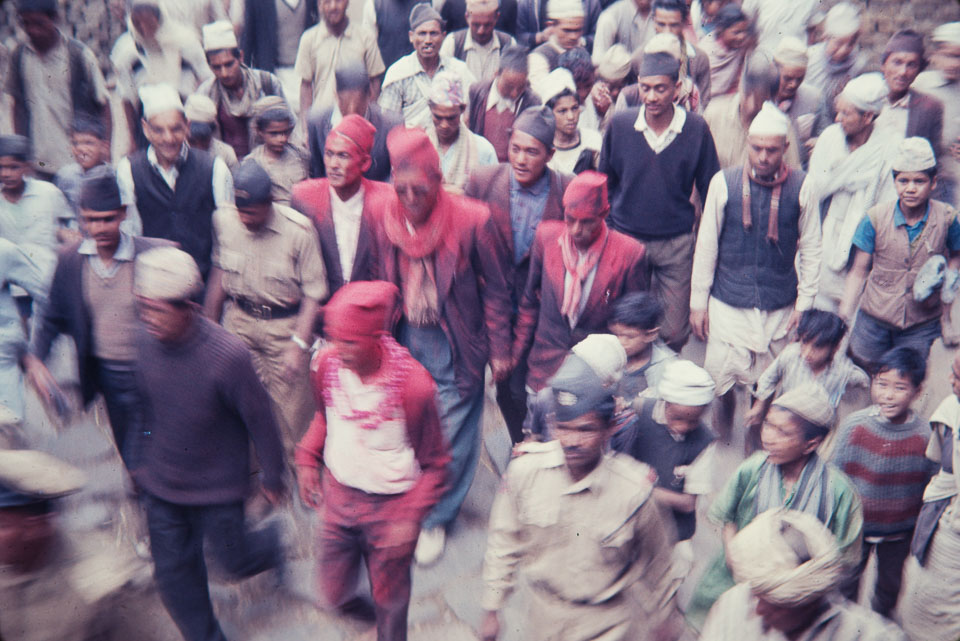
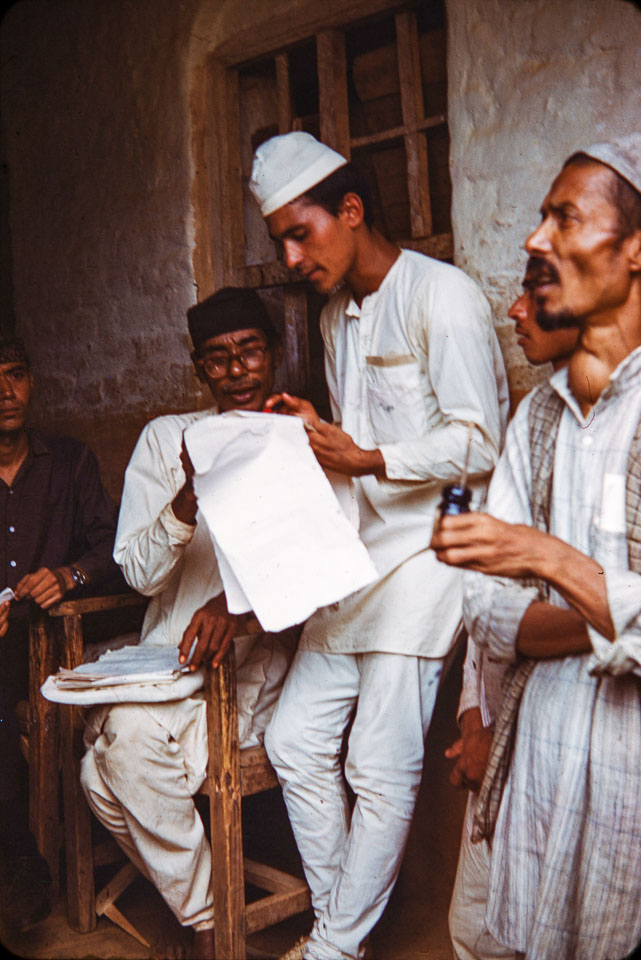

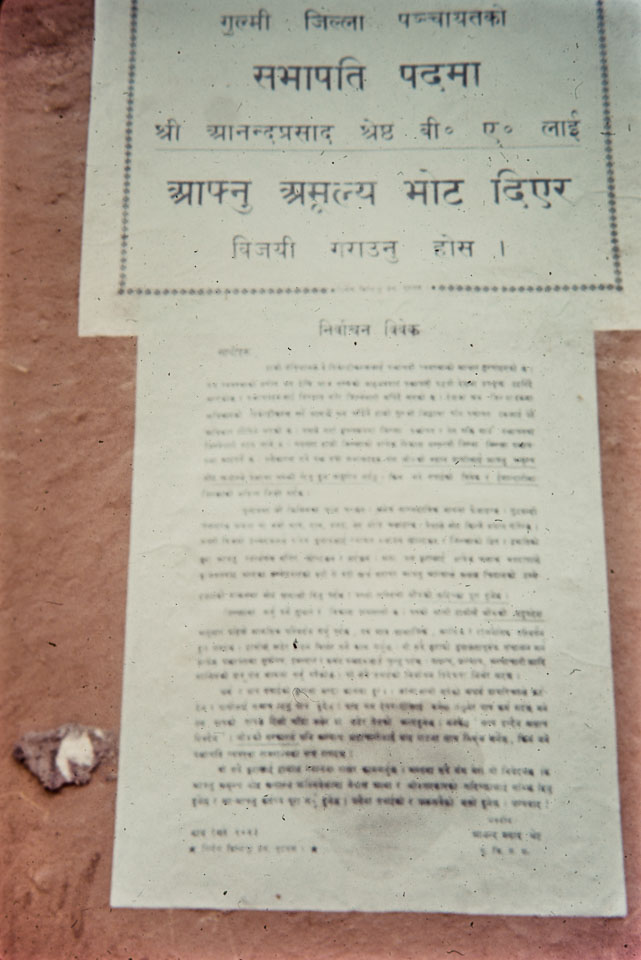


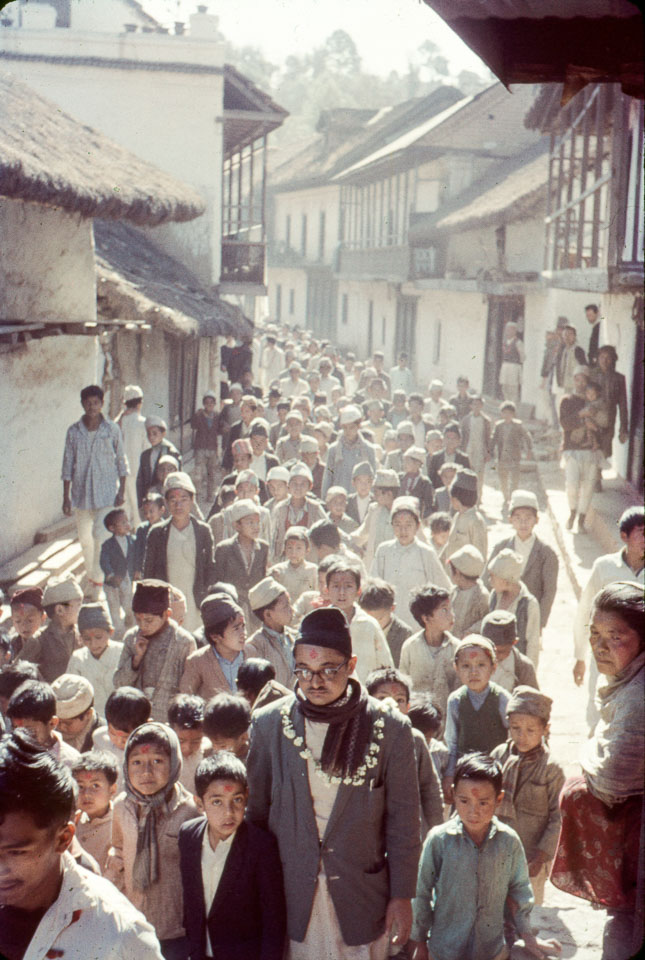

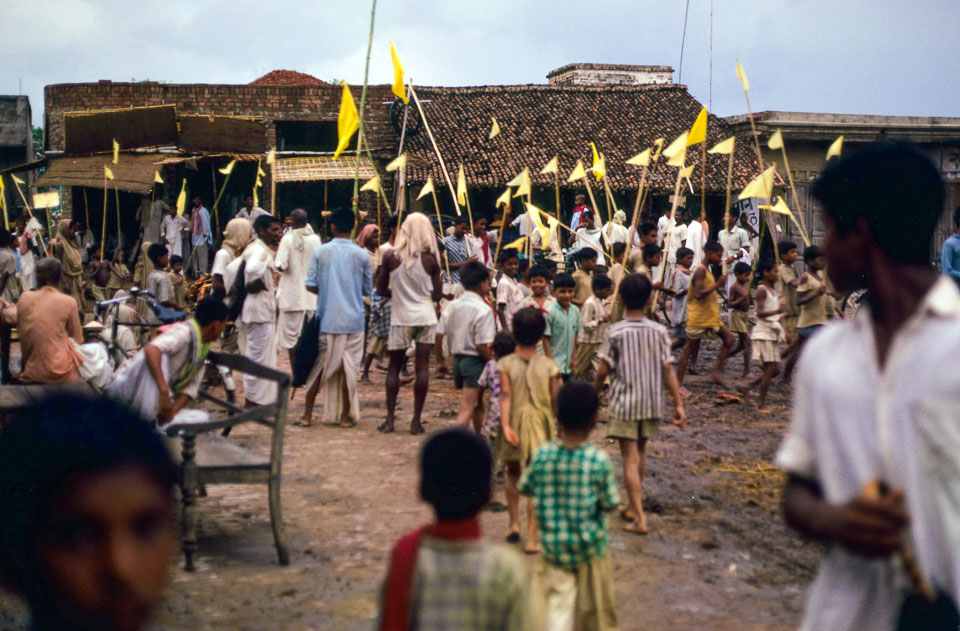
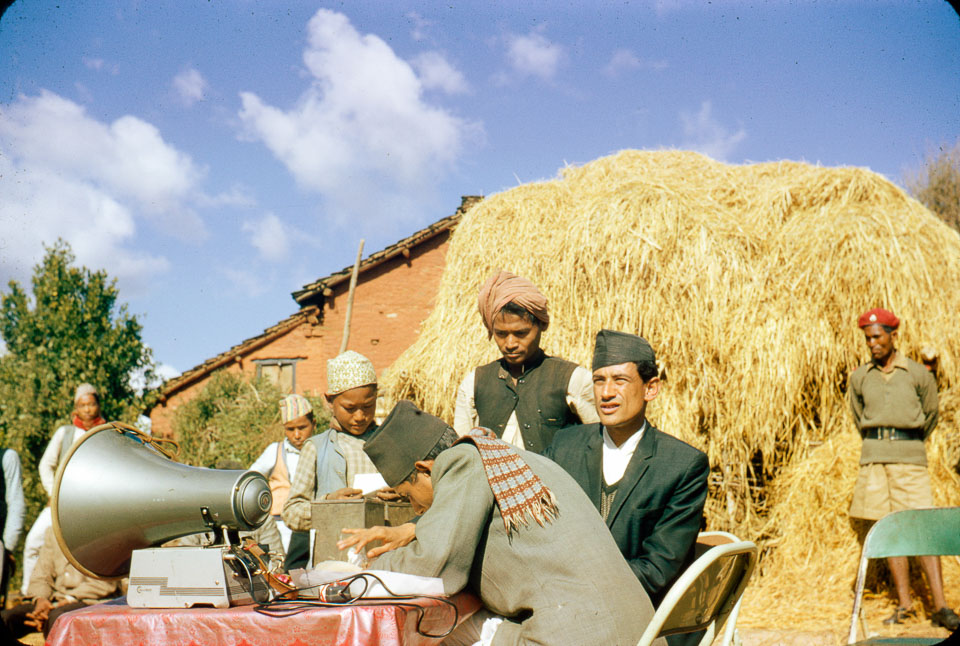


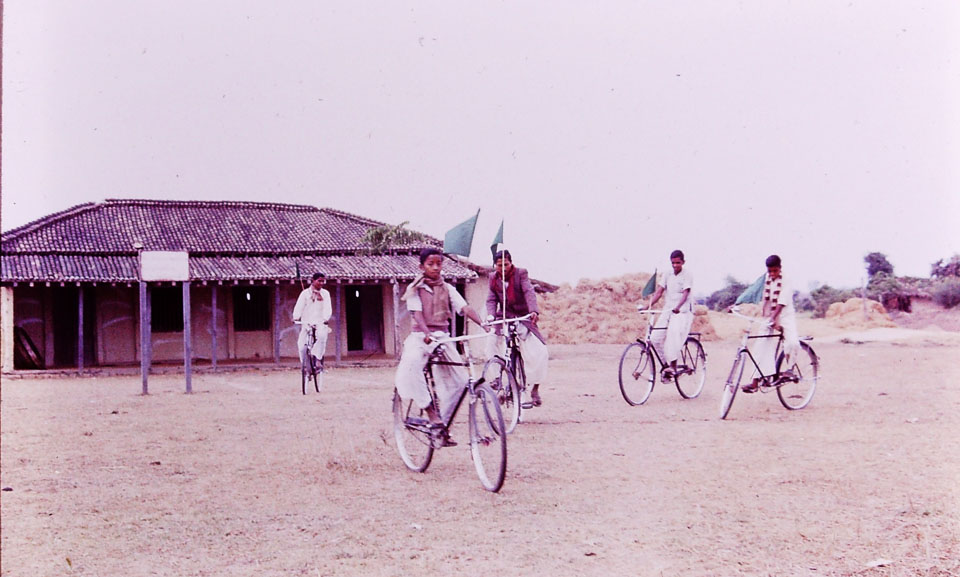

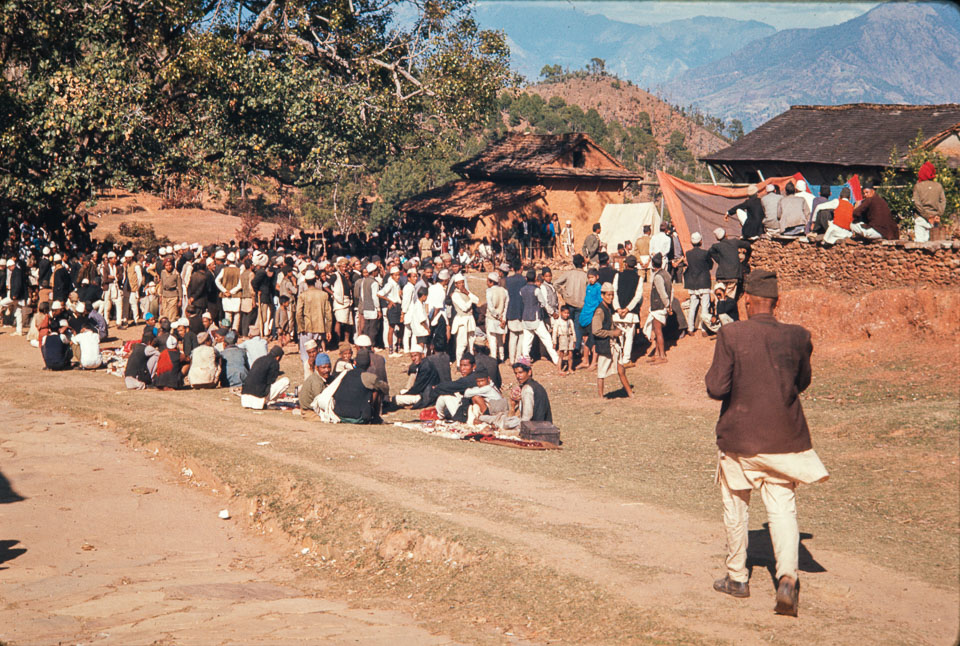
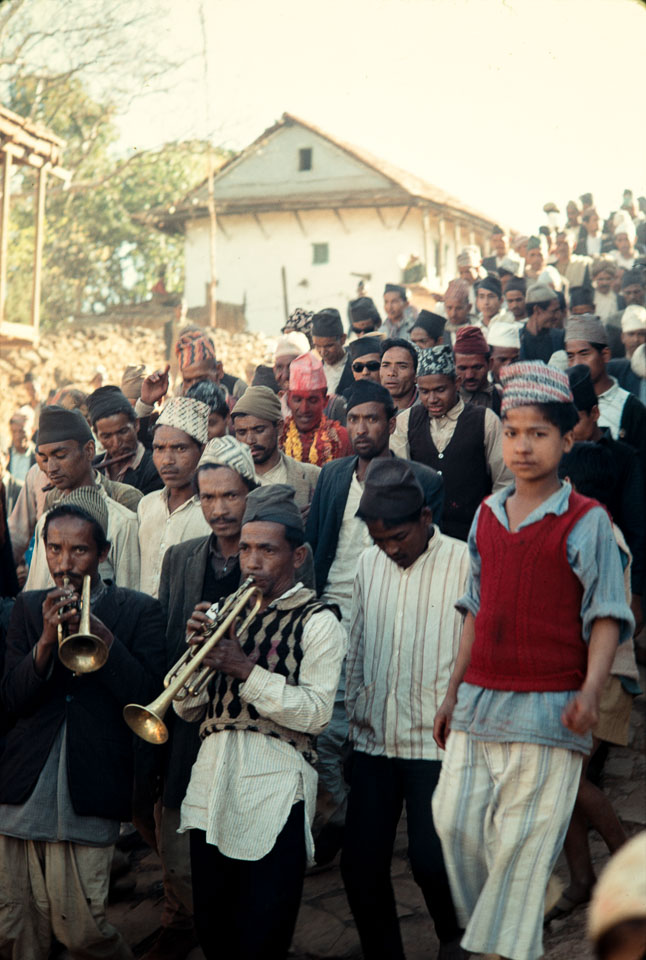
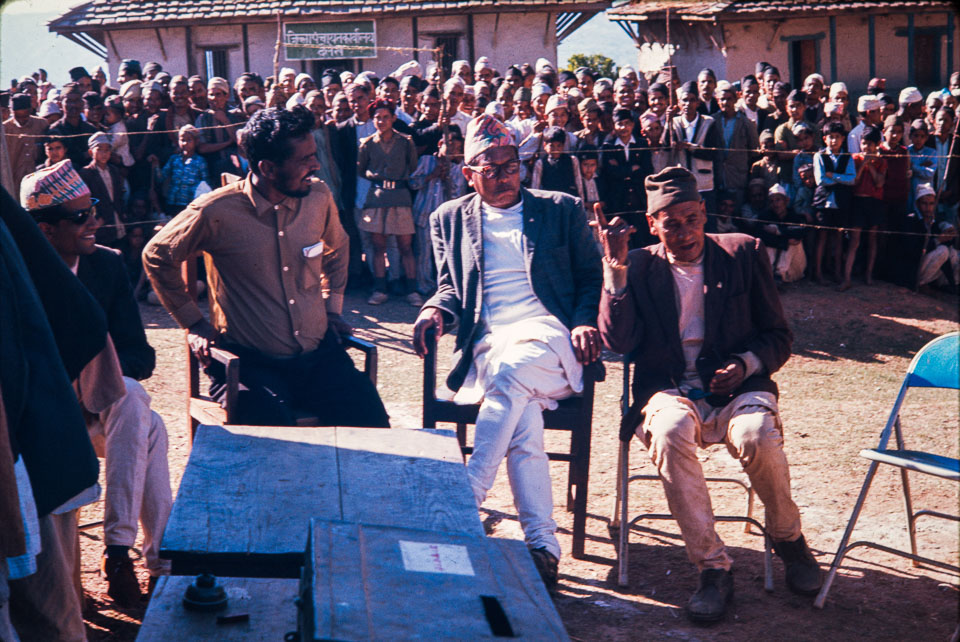




 8.12°C Kathmandu
8.12°C Kathmandu